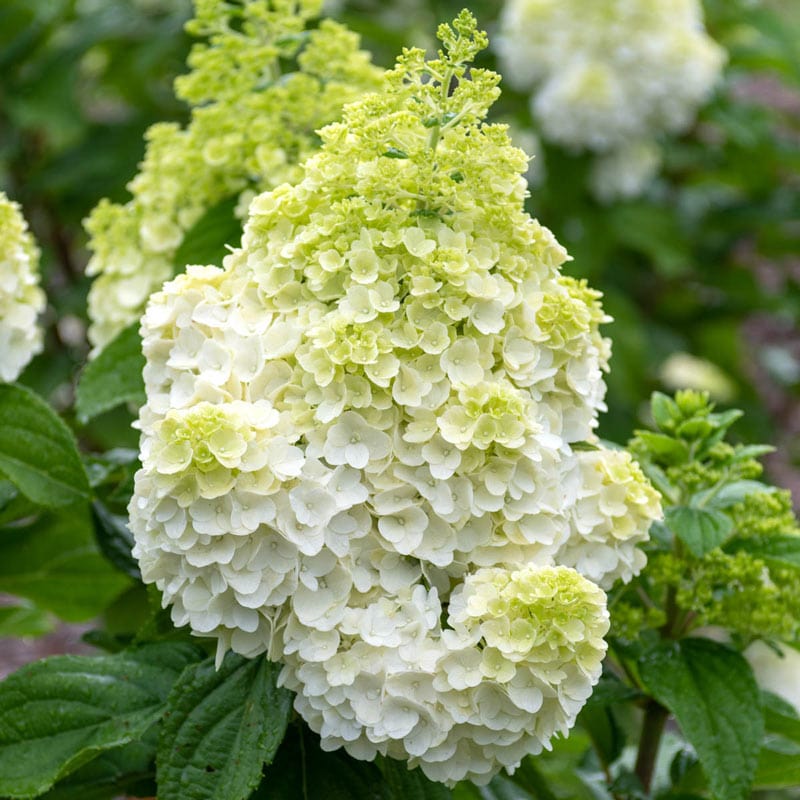Moonrock Hydrangeas: The Dark Horse Of The Garden
Moonrock Hydrangeas: The Dark Horse of the Garden
Hydrangeas are a popular choice for gardeners because they come in a wide variety of colors and sizes. But if you're looking for something a little different, you might want to consider Moonrock hydrangeas.
Moonrock hydrangeas are a relatively new variety of hydrangea, and they're quickly gaining popularity. They're known for their unique, dark purple flowers that bloom in the summer. Moonrock hydrangeas are also relatively low-maintenance, making them a good choice for busy gardeners.
In this blog post, we'll take a closer look at Moonrock hydrangeas. We'll discuss their history, their unique features, and how to care for them.
History of Moonrock Hydrangeas
Moonrock hydrangeas were first introduced in 2007 by the Proven Winners plant breeding company. They were created by crossing two other hydrangea varieties, Endless Summer and Nikko Blue.
The name "Moonrock" refers to the dark purple color of the flowers. The flowers are also known for their star-shaped petals.
Unique Features of Moonrock Hydrangeas
Moonrock hydrangeas have a few unique features that set them apart from other hydrangea varieties.
- Dark purple flowers: Moonrock hydrangeas have dark purple flowers that are not as common as other colors, such as blue or pink.
- Star-shaped petals: The petals of Moonrock hydrangeas are star-shaped, which gives them a unique appearance.
- Low-maintenance: Moonrock hydrangeas are relatively low-maintenance, making them a good choice for busy gardeners.
How to Care for Moonrock Hydrangeas
Moonrock hydrangeas are relatively easy to care for. They prefer full sun to partial shade, and they need well-drained soil.
Moonrock hydrangeas should be watered regularly, especially during the summer months. They should also be fertilized in the spring and fall.
Moonrock hydrangeas are relatively pest- and disease-resistant. However, they can be susceptible to powdery mildew. If you see powdery mildew on your Moonrock hydrangeas, you can treat it with a fungicide.
Conclusion
Moonrock hydrangeas are a unique and beautiful variety of hydrangea. They're relatively easy to care for, and they're a great addition to any garden.
If you're looking for a hydrangea with a little bit of a different look, Moonrock hydrangeas are a great option.
Moonrock hydrangeas are one of the most stunning flowers in the world. Their large, round blooms are a deep purple color that seems to glow in the moonlight. If you're looking for a flower that will add a touch of magic to your garden, then a moonrock hydrangea is a must-have.
But what exactly is a moonrock hydrangea? And how do you care for it? If you're not sure, then you'll want to visit . This website has everything you need to know about moonrock hydrangeas, from planting and care to stunning photos of these amazing flowers.
So what are you waiting for? Visit today and learn more about moonrock hydrangeas!
FAQ of moonrock hydrangea
Q: What is a moonrock hydrangea?
A moonrock hydrangea is a type of hydrangea that is known for its large, round blooms that change color from pink to blue depending on the acidity of the soil. The name "moonrock" comes from the way the blooms look like small, round moons.
Q: How do I care for a moonrock hydrangea?
Moonrock hydrangeas are relatively easy to care for. They prefer full sun to partial shade and well-drained soil. They should be watered regularly, especially during the summer months. To encourage blue blooms, the soil should be kept slightly acidic.
Q: How do I deadhead a moonrock hydrangea?
Deadheading is the process of removing spent blooms from a plant. This helps to encourage new blooms to form. To deadhead a moonrock hydrangea, simply pinch or snip off the spent blooms.
Q: What are some common pests and diseases that affect moonrock hydrangeas?
Moonrock hydrangeas are susceptible to a few common pests and diseases, including aphids, scale, and powdery mildew. Aphids are small, sap-sucking insects that can cause the leaves of a moonrock hydrangea to curl and become discolored. Scale is a type of insect that attaches itself to the stems and leaves of a plant. Powdery mildew is a fungus that can cause the leaves of a plant to become covered in a white, powdery substance.
Q: How can I prevent pests and diseases from affecting my moonrock hydrangea?
There are a few things you can do to prevent pests and diseases from affecting your moonrock hydrangea. First, make sure that the plant is healthy and well-cared for. This means watering it regularly, fertilizing it as needed, and deadheading spent blooms. Second, you can monitor the plant for signs of pests or diseases. If you see any problems, you can treat them early to prevent them from spreading.
Image of moonrock hydrangea
5 different images of "moonrock hydrangea" from Pinterest:
- Image 1: A close-up of a single moonrock hydrangea flower, showing its delicate petals and dark centers.

- Image 2: A cluster of moonrock hydrangea flowers in bloom, against a backdrop of green leaves.

- Image 3: A full plant of moonrock hydrangea, showing its large, round blooms.

- Image 4: A moonrock hydrangea in a garden setting, surrounded by other flowers and greenery.

- Image 5: A bouquet of moonrock hydrangea flowers, arranged in a vase.

Post a Comment for "Moonrock Hydrangeas: The Dark Horse Of The Garden"